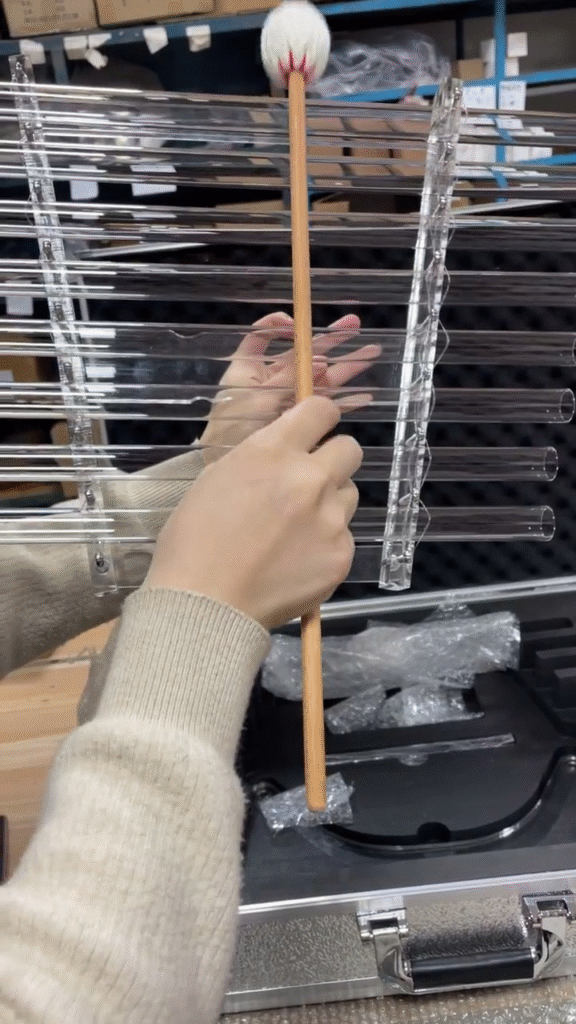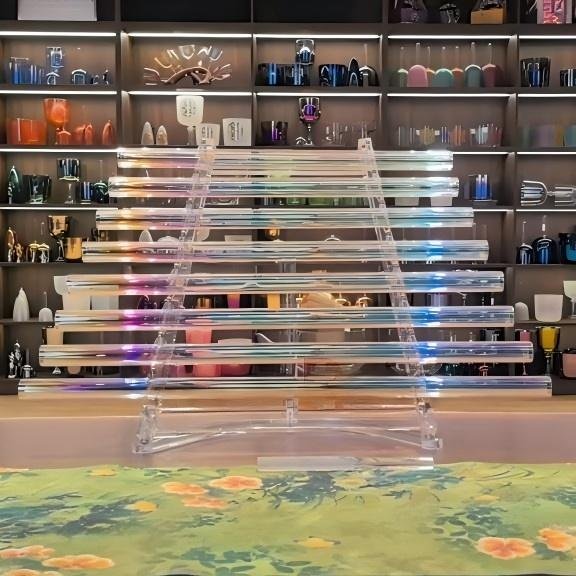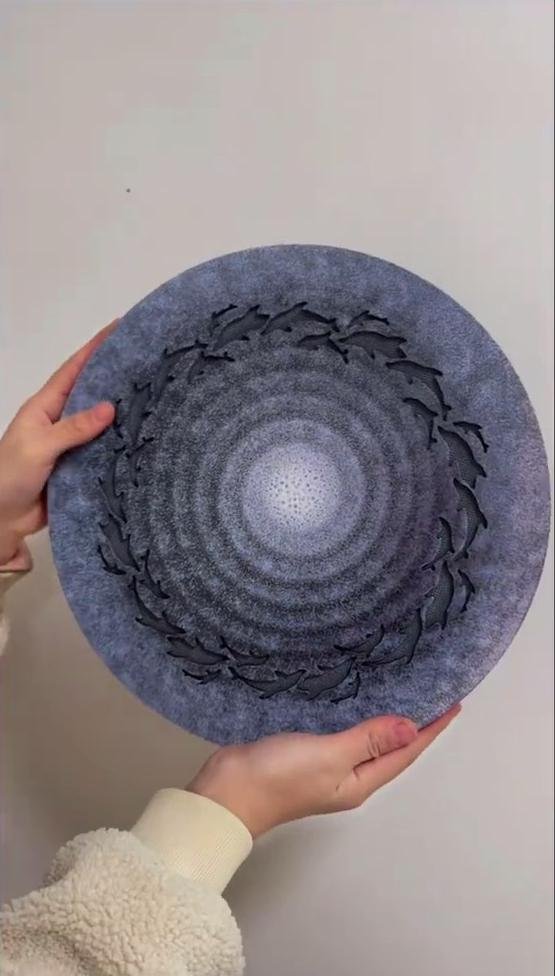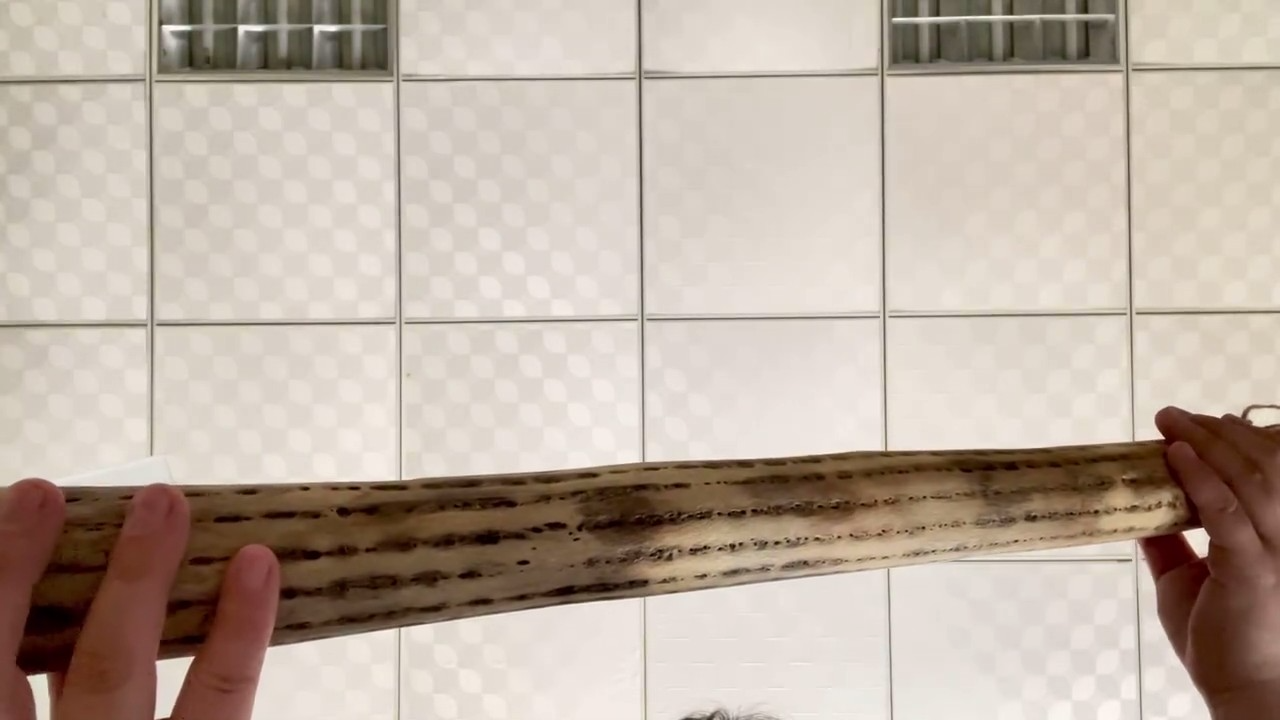The crystal harp represents a revolutionary fusion of ancient crystal wisdom and modern acoustic science, creating an instrument capable of producing transcendent sounds that heal, inspire, and transform consciousness. Unlike traditional harps that rely on tensioned strings, crystal harps utilize precisely tuned quartz crystal tubes that resonate with pure, sustained tones when struck with specialized mallets, producing unique acoustic properties invaluable for sound therapy, meditation, musical performance, and consciousness exploration.
This comprehensive guide explores every dimension of crystal harp mastery, from historical foundations to unlimited future potential, providing complete preparation for discovering the infinite possibilities this remarkable instrument offers.

Origins and Evolution History
Ancient Foundations and Cultural Background
Crystal harp development builds upon millennia of human understanding about crystal properties and their healing potential. Ancient Egyptian civilization demonstrated sophisticated knowledge of crystal acoustics, incorporating quartz resonators into temple architecture and healing practices that recognized specific frequencies’ power to influence physical and spiritual well-being.
Hindu traditions developed elaborate frameworks for understanding how crystal vibrations align with chakra energy centers and facilitate meditation states, while Chinese medicine integrated crystal therapy into comprehensive healing systems viewing sound and vibration as fundamental health-maintaining forces.
Native American traditions utilized crystal singing in ceremonial contexts, recognizing crystal sounds’ capacity to facilitate spiritual communication and induce healing-conducive altered consciousness states. These diverse cultural traditions provided conceptual foundations for modern crystal harp development.
The New Age movement of the late 20th century created cultural conditions encouraging experimentation with alternative healing modalities and consciousness exploration tools, providing fertile ground for innovations combining ancient wisdom with modern technology to create entirely new therapeutic and musical instrument categories.
Technological Innovation and Manufacturing Evolution
Practical crystal harp development required significant advances in materials science, particularly high-purity quartz crystal production with consistent acoustic properties. Early crystal sound experiments were limited by suitable material availability and costs, plus precision requirements for proper tuning and acoustic optimization.
Synthetic crystal production breakthroughs during the mid-20th century provided access to materials with superior acoustic properties and consistent quality, making large-scale crystal harp manufacturing economically viable. Synthetic crystals often exceeded natural crystals in purity and acoustic consistency while offering better size, shape, and resonant frequency control.
Manufacturing techniques evolved from hand-crafted individual instruments to sophisticated production systems maintaining precise tolerances across large runs. Computer-controlled cutting and polishing equipment enabled creation of crystal tubes with exact dimensions for specific frequencies, while advanced quality control ensured consistent acoustic performance.
Design philosophy gradually shifted from purely functional considerations to encompass aesthetic beauty, ergonomic comfort, and modern technology integration. Contemporary crystal harps represent sophisticated engineering achievements balancing acoustic performance, visual appeal, practical usability, and recording/amplification system compatibility.
Scientific Principles and Acoustic Foundations
Crystal Acoustic Properties Analysis
Quartz crystal possesses unique physical properties ideal for musical and therapeutic sound production. Crystalline structure creates highly organized molecular arrangements transmitting vibrational energy with minimal distortion, producing pure tones with exceptional clarity and harmonic content distinguishing crystal instruments from conventional musical devices.
The piezoelectric effect inherent in quartz means mechanical stress produces electrical charges while electrical charges create mechanical deformation. This bidirectional energy conversion contributes to remarkable acoustic properties by enabling efficient energy transfer between vibrational modes and creating complex harmonic interactions enriching sonic experience.
Crystal density and elasticity modulus determine fundamental acoustic characteristics including sound transmission velocity, resonant frequency ranges, and harmonic overtone production. These properties can be precisely controlled through crystal selection and processing, enabling manufacturers to create instruments with specific acoustic signatures tailored for particular applications.
Temperature stability represents another crucial advantage for musical applications. Unlike metals and organic materials that expand and contract significantly with temperature changes, quartz crystal maintains relatively stable dimensions and acoustic properties across normal environmental ranges, ensuring consistent tuning and performance reliability.
Tuning Theory and Sound Therapy Foundation
Musical tuning systems require careful consideration of mathematical precision and practical applications. Equal temperament provides maximum compatibility with conventional instruments while facilitating complex harmonic progressions, while just intonation offers superior harmonic purity through exact mathematical frequency ratios.
Bioresonance principles suggest living organisms respond to specific frequencies corresponding to natural biological rhythms and cellular vibration patterns. Crystal harp frequencies can potentially influence biological processes by providing external acoustic stimulation encouraging synchronization with healthy frequency patterns.
Brainwave entrainment represents well-documented phenomena where external rhythmic stimuli influence brainwave patterns, potentially inducing specific consciousness states associated with relaxation, focus, creativity, or healing. Crystal harp sounds with pure frequencies and sustained tones provide ideal brainwave entrainment stimuli.
Clinical research into crystal harp therapy continues expanding understanding of how specific frequencies affect pain perception, anxiety levels, sleep quality, immune function, and overall well-being. While research remains early-stage, preliminary findings suggest significant therapeutic potential for properly applied crystal harp interventions.
Crystal Harp Classification and Selection
Functional Categories
Therapeutic-grade crystal harps prioritize acoustic precision, frequency stability, and safety considerations meeting medical and clinical standards. These instruments feature certified frequency accuracy, medical-grade materials, and documentation supporting professional healthcare setting use for sound therapy applications.
Meditation-focused crystal harps emphasize sustained tone production, harmonic richness, and acoustic properties supporting contemplative practices. These instruments often feature extended sustain times, carefully selected frequency combinations promoting relaxation and inner focus, and portable designs accommodating personal spiritual practice.
Performance-oriented crystal harps maximize musical expressiveness, dynamic range, and compatibility with other instruments and recording systems. These typically offer expanded frequency ranges, enhanced volume capabilities, and acoustic characteristics complementing traditional musical genres and ensemble playing.
Educational crystal harps balance affordability, durability, and standardized features supporting structured learning environments. These prioritize consistent quality across production runs, simplified maintenance requirements, and cost-effectiveness making them accessible for educational institutions and individual students.
Material and Craftsmanship Classifications
Natural crystal harps utilize genuine quartz materials providing traditional aesthetic appeal and claimed metaphysical properties associated with natural crystal formations. These instruments often command premium prices due to material costs and individual characteristics making each instrument unique.
Synthetic crystal harps employ laboratory-grown quartz offering superior acoustic consistency, controlled properties, and cost advantages making high-quality instruments more accessible. Synthetic crystals often exceed natural crystals in purity and performance while providing predictable characteristics across production runs.
Composite material crystal harps incorporate advanced materials enhancing specific performance characteristics such as durability, weight reduction, temperature stability, or acoustic properties. These innovative designs represent cutting-edge crystal harp technology pointing toward future instrument development.
Artistic crystal harps emphasize visual beauty, decorative elements, and aesthetic appeal making them suitable for display and musical performance. These often feature custom colors, artistic metalwork, and design elements reflecting individual taste and complementing specific environments.
Comprehensive Playing Technique Mastery
Fundamental Technique Development
Proper posture forms the foundation for crystal harp playing, requiring attention to body alignment, breathing patterns, and physical relaxation enabling sustained playing without fatigue. Standing posture should maintain straight spine alignment while allowing arm freedom and natural breathing, while seated positions require appropriate chair height and back support.
Mallet grip techniques significantly influence tone quality, dynamic control, and playing endurance. The fundamental grip balances security and flexibility, holding mallets firmly enough for control while allowing natural wrist motion and finger adjustments facilitating subtle tonal variations and expressive playing.
Striking technique encompasses physical motions producing sound from crystal tubes, including approach angle, contact duration, follow-through, and recovery motions preparing for subsequent strikes. Proper technique maximizes acoustic output while minimizing physical effort and maintaining consistent sound quality.
Breathing coordination integrates respiratory rhythm with playing motions supporting sustained performance and enhancing musical expression. Conscious breathing patterns improve concentration, reduce performance anxiety, and create natural phrasing enhancing musical communication and listener engagement.
Advanced Technique Refinement
Two-handed coordination enables harmonic playing, complex rhythmic patterns, and sophisticated musical arrangements. Developing independent hand control requires systematic practice gradually increasing complexity while maintaining accuracy and musical expressiveness.
Tonal variation techniques utilize different striking positions, mallet materials, force applications, and contact methods creating diverse sound colors and expressive possibilities. Understanding how variables affect sound production enables players to develop personal voice and adapt playing to different musical contexts.
Harmonic playing techniques enable simultaneous multiple-note production creating chord progressions, counterpoint, and complex musical textures. Advanced harmonic skills require sophisticated coordination and musical understanding transforming crystal harp from primarily melodic to fully harmonic instrument.
Improvisational abilities represent the highest musical development level, enabling spontaneous musical content creation responding to immediate inspiration and situational demands. Improvisation skills develop through extensive scale practice combined with creative experimentation and performance experience.
Music Theory and Composition
Theoretical Foundations
Scale systems provide frameworks for understanding crystal harp’s musical possibilities and limitations. Major and minor scales form foundations for Western musical applications, while pentatonic scales offer simplified harmonic structures highlighting crystal harp’s pure tonal qualities.
Harmonic theory must account for the instrument’s acoustic characteristics and physical limitations while maximizing unique sonic advantages. Understanding interval relationships, chord progressions, and harmonic rhythm enables effective composition and arrangement for crystal harp performance.
Modal systems derived from ancient musical traditions offer alternative tonal frameworks particularly suited to crystal harp’s unique acoustic characteristics. Modes create distinctive emotional colors complementing crystal harp’s ethereal sound qualities.
Compositional Applications
Classical music adaptation requires careful consideration of crystal harp’s capabilities while preserving essential musical content and emotional impact. Successful adaptations often simplify texture while maintaining harmonic structure and melodic integrity.
Folk music traditions provide rich source material for crystal harp arrangement, often featuring melodic structures and harmonic progressions translating naturally to crystal harp’s acoustic characteristics. Folk adaptations introduce cultural diversity while highlighting universal musical elements.
Original composition creation can emerge from numerous inspiration sources including natural phenomena, emotional experiences, spiritual insights, and sonic exploration. Understanding these sources helps composers develop authentic personal voice and meaningful musical content.
Sound Therapy and Healing Applications

Therapeutic Theory Foundation
Frequency medicine principles suggest specific acoustic frequencies can influence biological processes through resonant interactions with cellular structures, organ systems, and neurological networks. Crystal harp’s precise frequency control makes it ideal for applications requiring specific therapeutic frequencies.
Psychoacoustic healing encompasses psychological and emotional sound effects contributing to overall well-being and healing processes. Crystal harp’s pure tones and harmonic richness can induce profound relaxation, emotional release, and consciousness shifts supporting healing and personal transformation.
Neurological effects include brainwave entrainment, autonomic nervous system regulation, and neuroplasticity enhancement potentially contributing to improved mental function, emotional stability, and overall neurological health.
Clinical Applications
Pain management applications utilize crystal harp’s capacity to influence pain perception through acoustic stimulation, distraction, and relaxation induction. Clinical studies suggest properly applied sound therapy can provide significant pain relief without pharmaceutical side effects.
Stress reduction protocols leverage crystal harp’s natural relaxation-inducing properties helping individuals manage anxiety, tension, and stress-related health problems. Regular therapy sessions may provide cumulative stress management and resilience building benefits.
Sleep improvement interventions use crystal harp’s calming acoustic properties addressing insomnia, sleep disturbances, and sleep quality issues. Specific frequency combinations and playing techniques can encourage natural sleep patterns and improve overall sleep hygiene.
Professional Development
Theoretical knowledge requirements include understanding anatomy, physiology, psychology, music therapy principles, and crystal harp acoustic properties informing effective therapeutic intervention design and implementation.
Practical skill development encompasses performance abilities, client assessment techniques, treatment planning, session management, and outcome evaluation ensuring safe, effective, and professional therapeutic service delivery.
Ethical considerations include scope of practice limitations, client safety protocols, professional boundaries, confidentiality requirements, and collaborative relationships with healthcare providers maintaining therapeutic integrity and client welfare.
Commercial Applications and Industry Development
Industry Analysis
Manufacturing sector development encompasses raw material sourcing, production techniques, quality control systems, and cost management strategies enabling sustainable crystal harp industry growth while maintaining product quality and affordability.
Market applications include healthcare industry therapy programs, education sector adoption, entertainment industry integration, and corporate wellness applications utilizing crystal harp services to enhance experiences and outcomes.
Entrepreneurial opportunities include product innovation, service innovation, technology integration, and market development strategies building market presence and customer base while establishing sustainable competitive positions.
Global Development
Cross-cultural musical exchange explores opportunities combining crystal harp’s unique properties with diverse musical traditions, creating hybrid forms honoring cultural heritage while pushing artistic boundaries and fostering international understanding.
International market expansion requires research analysis, localization strategies, brand development, and partnership networks enabling efficient market entry while accommodating local preferences and requirements.
Cultural preservation ensures valuable traditional knowledge is preserved, respected, and transmitted appropriately while avoiding cultural appropriation and maintaining authentic connections to source traditions.
Future Development and Prospects
Technological Advancement
Advanced materials research explores new crystal compositions, manufacturing techniques, and surface treatments enhancing acoustic properties, durability, and aesthetic appeal while reducing costs and environmental impact.
Smart technology integration involving internet connectivity, sensor systems, artificial intelligence, and automated features creates new possibilities for crystal harp functionality, accessibility, and user experience enhancement.
Biotechnology integration explores possibilities for crystal harp interaction with biological systems, potentially enabling direct biofeedback integration and personalized therapeutic applications optimizing healing outcomes for individual users.
Application Expansion
Precision medicine applications may utilize crystal harp therapy customized to individual genetic profiles, health conditions, and therapeutic needs, providing personalized treatment protocols optimizing healing outcomes while minimizing side effects.
Virtual reality integration creates immersive experiences combining crystal harp sound with visual and tactile stimulation, opening new possibilities for therapy, education, entertainment, and artistic expression transcending traditional boundaries.
Global accessibility expansion through reduced costs, improved distribution, and educational program development could make crystal harp benefits available to broader populations while fostering international community development.
Conclusion: Infinite Possibilities
The crystal harp embodies humanity’s eternal quest to harness natural forces for healing, artistic expression, and consciousness expansion. Through combining ancient wisdom about crystal properties with modern acoustic science, crystal harp technology creates unprecedented opportunities for individual transformation and collective healing.
Beginning practitioners should focus on fundamental skills including proper posture, basic techniques, and simple musical understanding while building familiarity with crystal harp’s unique acoustic properties through consistent practice. Intermediate development involves expanding technical capabilities and exploring therapeutic applications, while advanced practitioners can pursue specialized applications including professional performance, therapeutic practice, or innovation development.
The unlimited guide to crystal harp ultimately points toward unlimited possibilities for human development, healing, and creative expression honoring both ancient wisdom and contemporary innovation while serving the highest good for individuals and communities worldwide. Through dedicated practice, study, and application, crystal harp practitioners become part of a global movement toward greater harmony, consciousness, and collective well-being that transcends cultural boundaries while celebrating the profound healing potential inherent in sound, vibration, and human creativity.
Future technological advancement will likely produce enhanced crystal harps with improved accessibility and new applications, while global integration processes will see broader cultural acceptance and scientific validation establishing crystal harp therapy as accepted medical practice. The instrument’s potential for collective transformation suggests widespread practice might contribute to societal shifts toward greater harmony and collaborative problem-solving addressing global challenges through shared commitment to healing and transformation.







